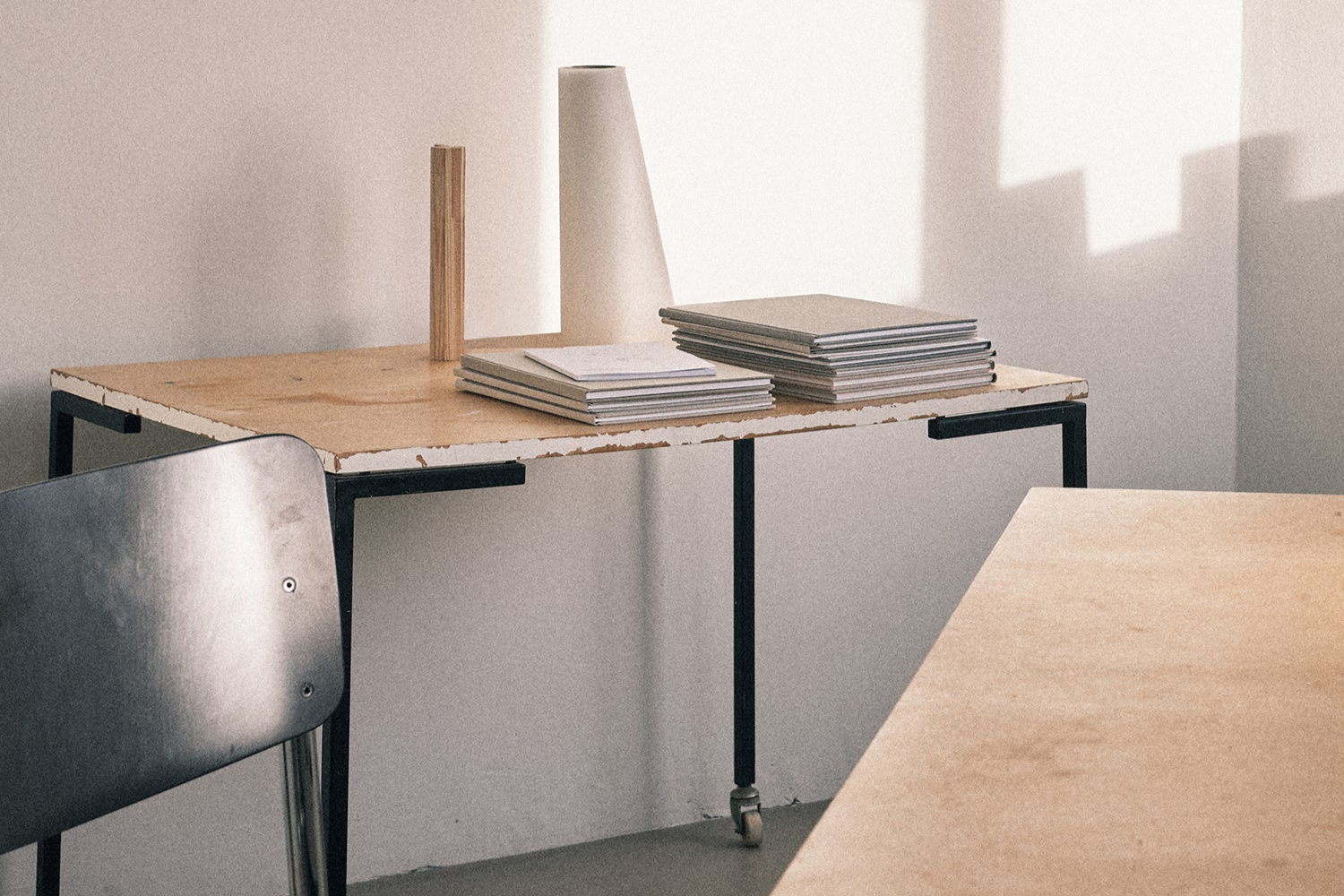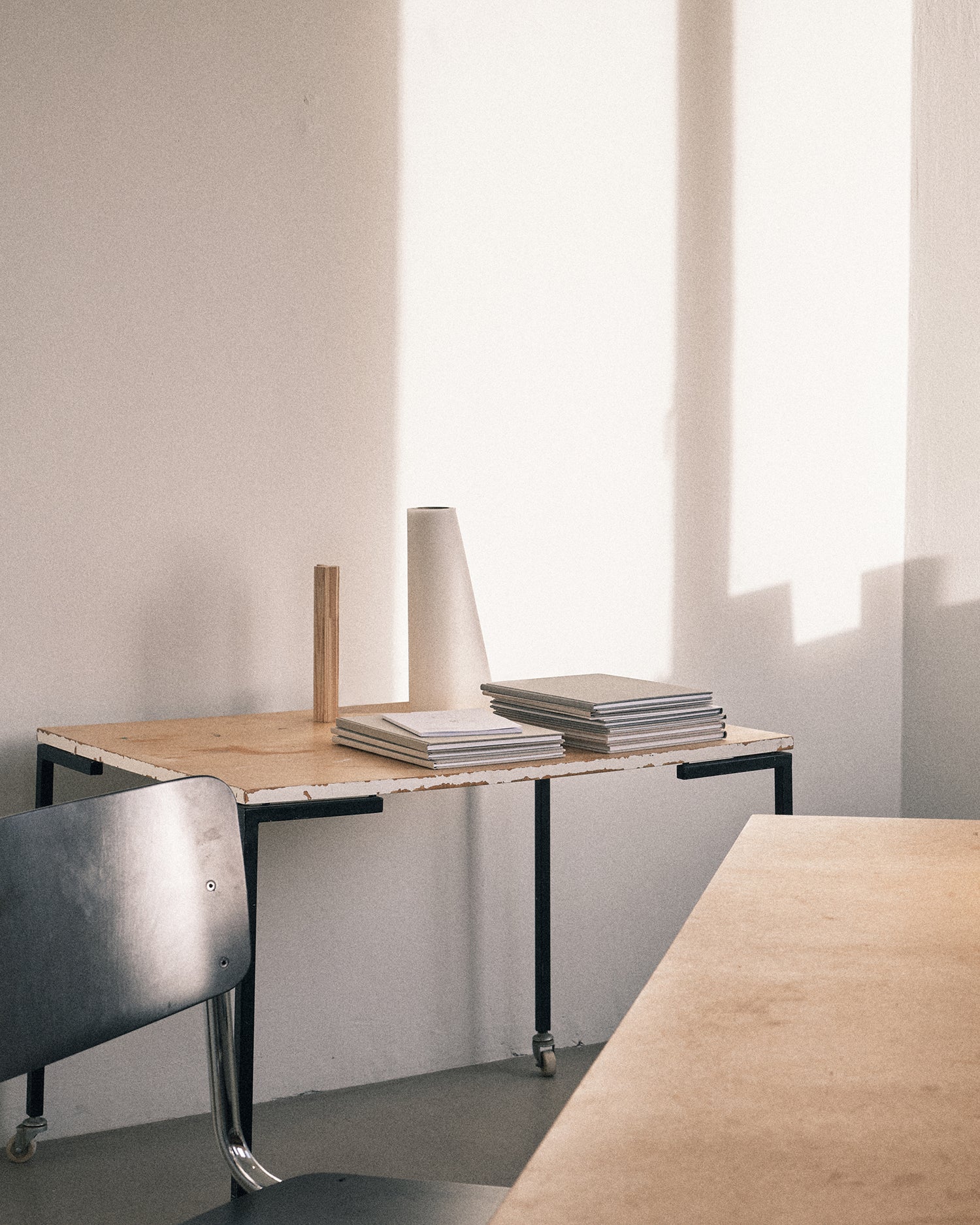

Lund Studiobord
Bernt Nyberg ritade detta bord till sitt arkitektkontor i Lund. Det användes som ett avlastningsbord för ritningar och kunde tack vare sin låga höjd och de hjulförsedda benen enkelt skjutas in under skrivbordet. Med sin enkla konstruktion och sitt grafiska uttryck påminner studiobordet om några av Nybergs mer framstående verk. De ursprungliga borden, liksom den övriga kontorsinredningen, tillverkades med största sannolikhet av de lokala leverantörer han vanligtvis arbetade med, Lennartssons trä och Cederqvist & Albertsson.
Originalförlagan är tillverkad av svartmålat stål och björkplywood med kantlist i massiv björk. Borden som Tallum tillverkar är har samma utförande, förutom att plywoodkärnan är ersatt med en massiv lamellskiva för att ge ytterligare stabilitet.
Hjulen på Nybergs originalförlaga är tillverkade i vitt gummi med en ytterdiameter på 42 mm. Tallums version har svarta hjul med polyuretanbana och en ytterdiameter på 50 mm. Detta beslut har fattats i samförstånd med Bernt Nybergs ättlingar och är en följd av nuvarande marknadsutbud. Det vita gummihjulet tros inte ha specialtillverkats för bordet, utan antas snarare vara något som fanns tillgängligt vid tiden. Ett sådant hjul tillverkas inte längre och därför har beslutet fattats att använda hjul i standardutförande från en svensk leverantör.
Bernt Nyberg
Bernt Nybergs (1927–1978) arkitektoniska alster är relativt litet, och det är inte förrän nyligen som han fått internationellt erkännande. Han föddes i Ockelbo och tog examen från Arkitekturskolan vid Kungliga Tekniska Högskolan 1952. Efter examen flyttade Nyberg till Malmö för att börja arbeta hos Klas Anshelm. Han öppnade sitt första kontor tillsammans med Karl Koistinen år 1958 och vann sedan första pris i en tävling om en ny idrottsanläggning i Fagersta. Under de kommande åren ritade de två unga arkitekterna bland annat äldreboenden, villor och radhus, allt beläget i Skåne. Nyberg och Koistinen gick skilda vägar 1964 och Nyberg startade upp sitt eget kontor.
Genom landskapsarkitekten Per Friberg fick Nyberg uppdraget att rita ekonomibyggnaderna till Skogskyrkogården i Gävle (1964). Dessa enkla men precisa byggnader kan betraktas som ett av hans första mogna verk. De är också de enda uppförda träkonstruktionerna som ritats av Nyberg. Betydligt tyngre och nästan bunkerliknande, var tegeltillbyggnaden till Landsarkivet i Lund (1970), vilket förmodligen är Nybergs mest uppmärksammade byggnad. Tunga tegelväggar kännetecknar också begravningskapellet i Höör (1971), men här lämnade han den strikta geometri som präglat hans tidigare byggnader. Det sista större arbete som Nyberg färdigställde innan sin alltför tidiga död 1978 var Landsstatshuset i Malmö (1975), känt för sin glas- och stålfasad med utanpåliggande kanalsystem. Från mitten av 1960-talet hade Nyberg en nära relation till Sigurd Lewerentz och de lämnade in ett gemensamt bidrag till tävlingen om att bygga ut Riksdagshuset i Stockholm (1971).
Bildkälla
Bernt Nybergs arkitektkontor i Malmö (produktsida). Foton av Nils Sjöstrand, beskurna.



